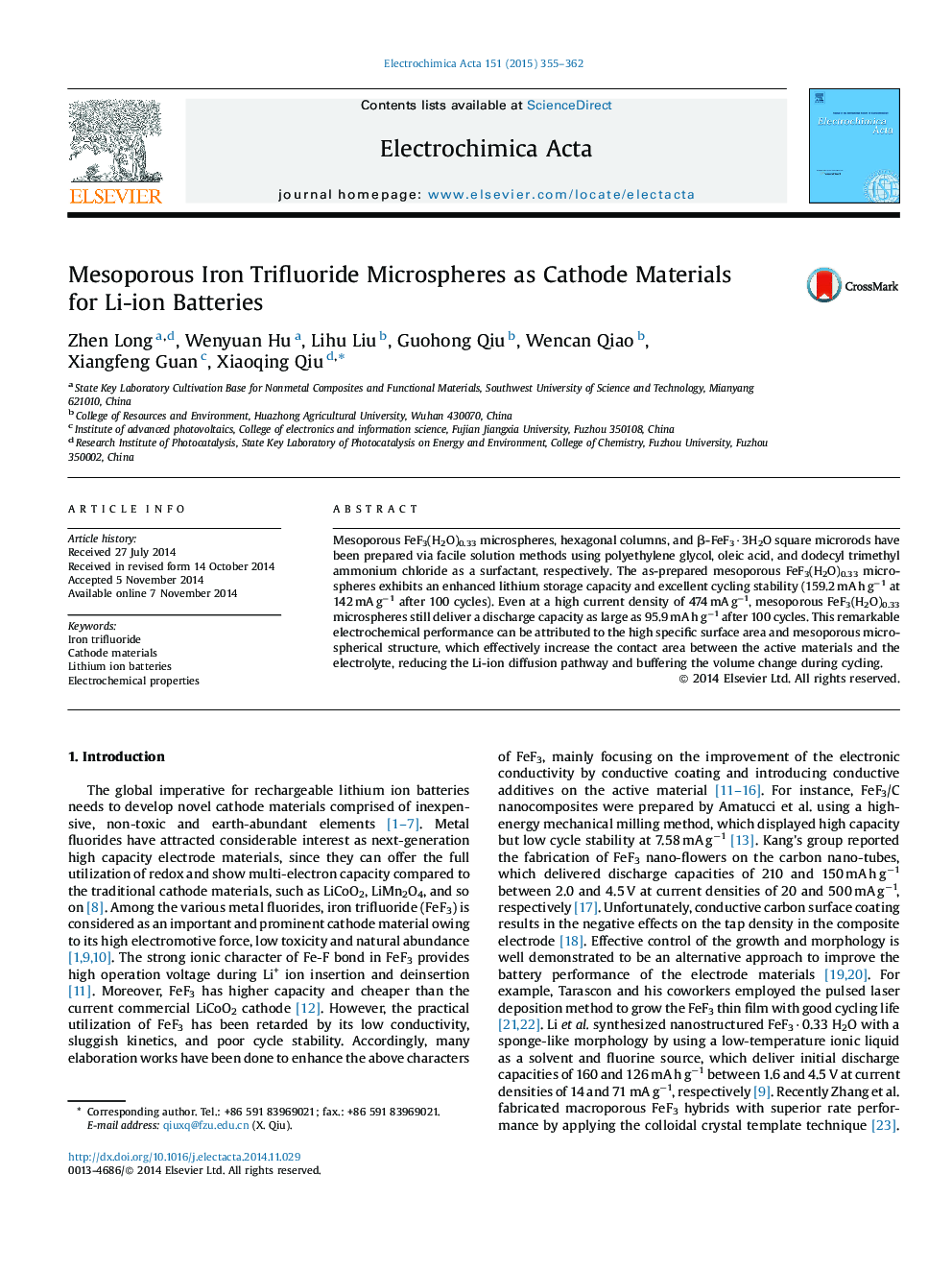| Article ID | Journal | Published Year | Pages | File Type |
|---|---|---|---|---|
| 184847 | Electrochimica Acta | 2015 | 8 Pages |
•Mesoporous FeF3(H2O)0.33 microspheres have been first synthesized by a facile solution method.•The properties comparison of FeF3(H2O)0.33 with different morphologies and β-FeF3 · 3H2O has been investigated.•The mesoporous FeF3(H2O)0.33 microspheres still deliver a discharge capacity as large as 175.1 mA h g−1 at a high current density of 475 mA g−1.•The mesoporous FeF3(H2O)0.33 microspheres exhibit excellent cycle stability.
Mesoporous FeF3(H2O)0.33 microspheres, hexagonal columns, and β-FeF3 · 3H2O square microrods have been prepared via facile solution methods using polyethylene glycol, oleic acid, and dodecyl trimethyl ammonium chloride as a surfactant, respectively. The as-prepared mesoporous FeF3(H2O)0.33 microspheres exhibits an enhanced lithium storage capacity and excellent cycling stability (159.2 mA h g−1 at 142 mA g−1 after 100 cycles). Even at a high current density of 474 mA g−1, mesoporous FeF3(H2O)0.33 microspheres still deliver a discharge capacity as large as 95.9 mA h g−1 after 100 cycles. This remarkable electrochemical performance can be attributed to the high specific surface area and mesoporous micro-spherical structure, which effectively increase the contact area between the active materials and the electrolyte, reducing the Li-ion diffusion pathway and buffering the volume change during cycling.
